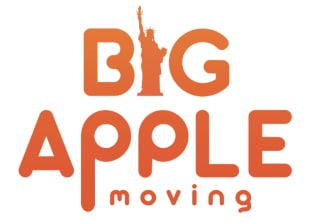Relocating to the bustling metropolis of New York can be a thrilling adventure, but it is widely known that moving within the city can be accompanied by substantial costs. Expenses such as hiring expert movers, transportation, and packing materials can accumulate rapidly.
Nevertheless, by employing strategic planning and prudent decision-making, it is possible to minimize moving expenses while maintaining the quality of the move. This guide will provide an array of tips and tricks to assist you in saving money during your move within NYC.
How To Calculate Moving Cost

Before delving into ways to reduce moving expenses, it’s essential to understand how the moving cost is typically calculated. The cost of a move can vary based on several factors, including the distance of your move, the size of your household, the number of movers required, and any additional services you opt for, such as packing or storage. Most moving companies offer free moving cost estimators, so it’s crucial to request quotes from multiple companies to compare prices accurately.
Additionally, consider the timing of your move. The demand for moving services can significantly impact the cost, so try to avoid peak moving seasons if possible. Planning your move during the off-peak periods can help you secure better rates and more flexibility with your chosen moving company.
What Are the Hidden Costs of Moving
Beyond the apparent expenses of hiring movers and renting a truck, several hidden costs can catch you by surprise during a move. Being aware of these potential expenses will enable you to budget more effectively and avoid unnecessary financial strain.
Packing Supplies: While packing materials may seem insignificant individually, the cost of moving cardboard boxes, bubble wrap, packing tape, and other supplies can quickly add up. To reduce this expense, consider sourcing free boxes from local stores or friends who have recently moved. Opt for eco-friendly alternatives like using towels or blankets as padding for fragile items.
Insurance and Liability Coverage: Moving companies generally provide basic liability coverage for your belongings. However, it may not be enough to cover the full value of your items in case of damage or loss during transit. Consider purchasing additional insurance or checking your homeowner’s insurance policy to see if it covers moving-related damages.
Utility Setup Fees: When moving to a new apartment or home, you might encounter setup fees for utilities such as electricity, gas, and internet services. These costs can be easily overlooked but can significantly impact your initial expenses. Research different utility providers and inquire about any setup fees or introductory offers to find the best deals.
Storage Costs: If you can’t move all your belongings into your new place immediately, you may need to rent a storage unit. Storage costs can vary based on the size of the unit and the duration of use. To save on storage expenses, declutter before your move and consider selling or donating items you no longer need.
Smart Strategies to Reduce Moving Costs
Now that we’ve identified some hidden costs, let’s explore effective strategies to reduce overall moving expenses:

Declutter Before You Move: When you move, it’s a good time to get rid of things you don’t need. You can give them away or sell them. This will help you use less packing materials and maybe need a smaller moving truck.
Pack Yourself: While hiring professional packers may save time, doing the packing yourself can significantly cut down on expenses. Start well in advance and enlist the help of friends and family to make the process more manageable.
Utilize Free Moving Supplies: As mentioned earlier, try to find free or low-cost packing supplies from local stores or online platforms. You can also ask friends or family who have recently moved if they have any boxes you can use.
Consider DIY Options: If you’re moving locally and have a small amount of belongings, renting a truck and moving yourself may be a cost-effective option. However, for long-distance moves or larger households, professional movers might be more efficient and offer better protection for your items.
Time Your Move Wisely: As previously mentioned, timing your move during the off-peak season can lead to better rates. Additionally, consider moving during the middle of the month when demand is typically lower.
Negotiate with Your Employer: If your move is work-related, check if your employer offers any relocation assistance or reimbursement. Many companies have policies in place to cover some of the expenses associated with employee relocations.
Conclusion
Moving in NYC doesn’t have to drain your bank account. By calculating your moving costs accurately, understanding the potential hidden expenses, and implementing smart strategies, you can significantly reduce your overall moving expenses. With proper planning and budgeting, you can focus on embracing the excitement of starting a new chapter in the city that never sleeps without breaking the bank.
